Spring is a truly wonderful time to be out birding, wherever you are. Birdlife at this time of year is rich and varied, while the unpredictability of migration makes each day as exciting as the next. Every birder will have their own favourite spring birding 'niche' – be it setting new early-arrival dates for songsters, hunting down the trickier passage migrants such as Ring Ouzel or Pied Flycatcher, soaking up a big push of Arctic Terns or sky-watching for raptors on the sunnier days.
For some, however, nothing beats the northward push of waders that occurs between March and early June. For inland patchwatchers in particular, this period offers an exciting opportunity to connect with many species that otherwise would not be possible in land-locked counties – especially those working patches with little or no standing water.
What's more, many will be looking pristine in their breeding finery, which only adds to their allure. The passive whites and greys of winter plumage are replaced with a varying (but always bold!) suffusion of rich rusty reds, gold and black, making some species barely recognisable in breeding condition. This, combined with their often starkly different habitat choices in spring, make some feel like different species altogether. Sanderling is a particularly profound example, with spring migrants looking so distinguished from the default whitish blobs scuttling around a sandy beach on a bracing winter's day. Bar-tailed Godwit and Red Knot too feel like entirely different animals, their brick-red summer dress a world apart from the subtle greys of the colder months.
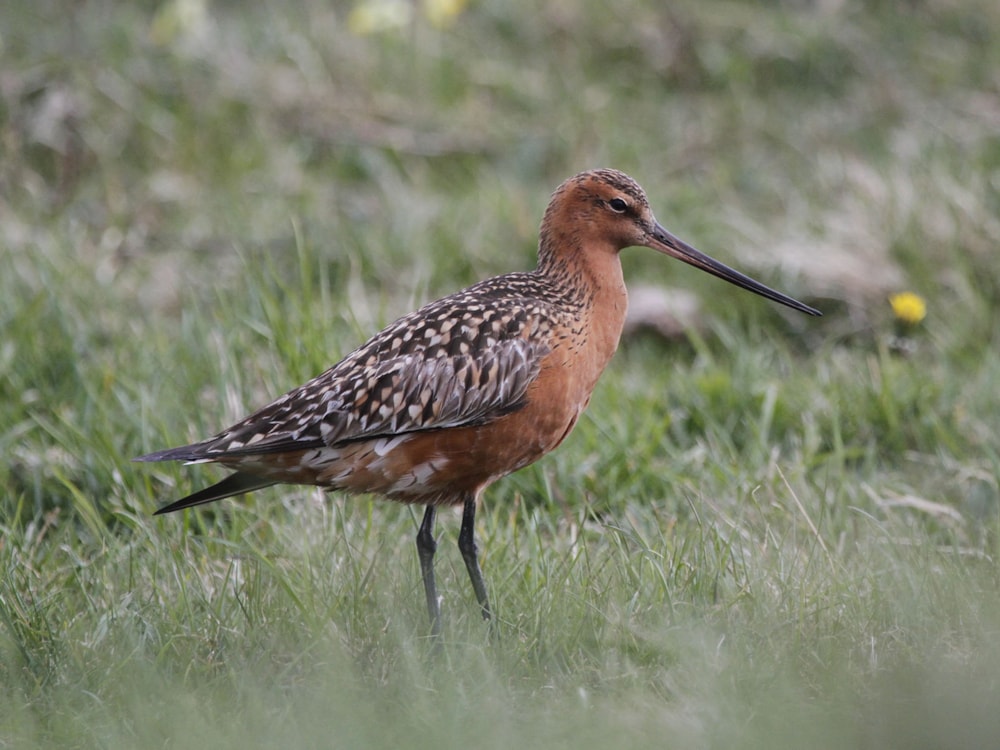
Coming across a brick-red male Bar-tailed Godwit in a field on spring passage is an entirely different experience to watching winter birds on the coast (Laurence Pitcher).
Spring as a whole is a protracted period of some three months, but the reality is that different shorebird species will be on the move at different times, some of which will be migrating en masse within a short window, sometimes lasting no more than a few days. Timing is therefore crucial, and knowing what's possible and when is key for the inland patcher.
Furthermore, waders are generally strong fliers. Most, especially those coastal-dwelling species, will look to migrate overland as quickly as possible. It often takes inclement weather, particularly fog or rain, to ground them – and even then, they don't usually hang around for long. This contributes to the 'lottery' feel of spring wader-watching on inland patches – you've got to be in the right place at the right time, but there are few more satisfying feelings than when you score.
Although watching a waterbody such as a reservoir, gravel workings or managed wetland greatly increases your chances of seeing passage waders, they can be seen anywhere – especially some of the larger, more conspicuous species, which are often quite vocal. For example, you might encounter a Eurasian Curlew or Whimbrel just about anywhere, even away from water, although the same probably couldn't be said for a Little Stint or Sanderling. And don't be put off if the waterbody on your patch amasses to little more than a few flooded fields, a small farm reservoir or a lake. Anywhere and everywhere will have its moment and produce patch gold, wader style.
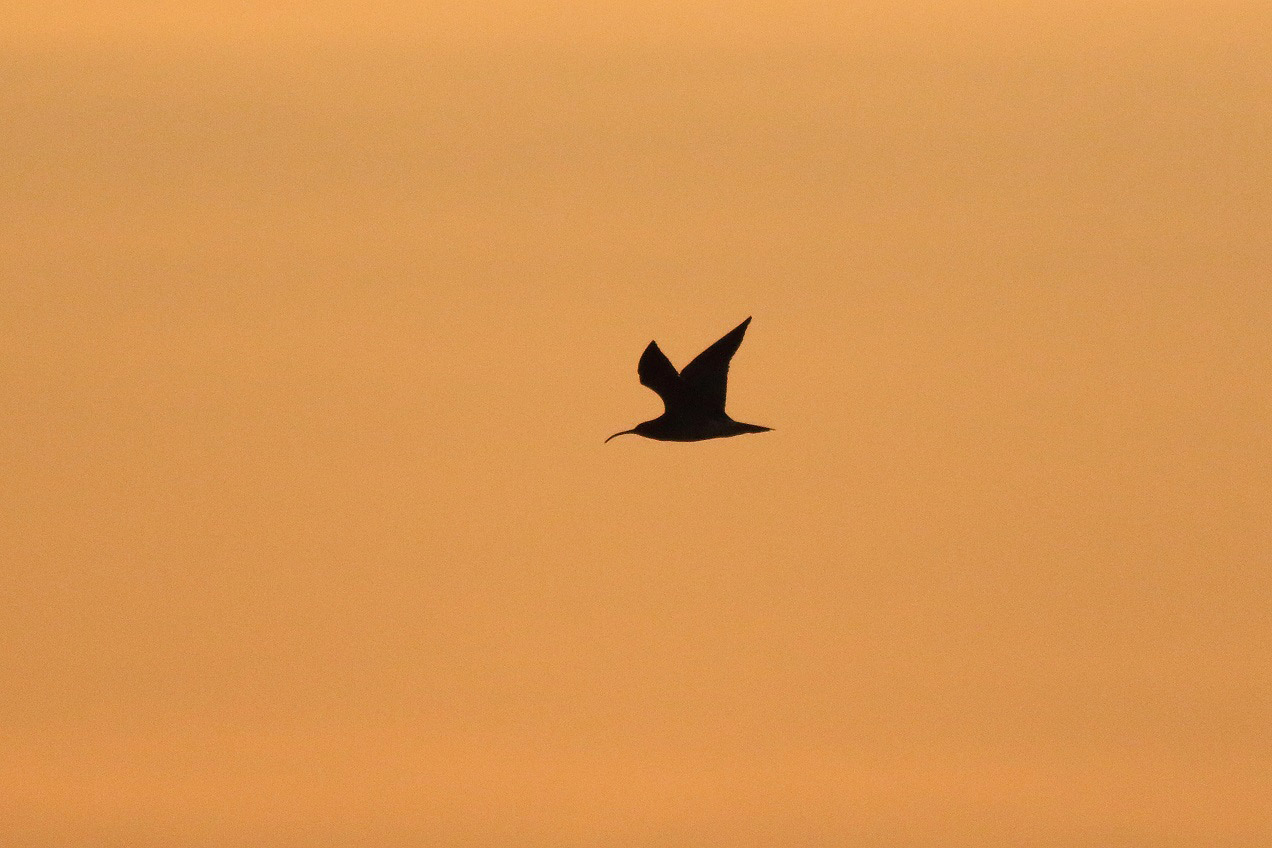
A passing Whimbrel is an achievable patch wader for any inland birder during April and May – they tend to be vocal, and are more often heard before being seen (Dave Harris).
It's inevitable that spending more time in the field equates to a better chance of a long list of passage waders. Repeated or protracted visits to a patch (alas, not possible in 2020) will produce turnover of birds – the most fleeting will fly straight through, perhaps circling overhead or flying around a waterbody for a minute or two before continuing. Others, assuming suitable habitat is available, may stop for a brief period to feed, rest or bathe. Some will even linger for a day or two, but short stays are generally the name of the game in the peak weeks of spring, when the lengthening days and hormones are driving birds to press on towards their breeding grounds as quickly as possible.
Weather conditions, too, play their part. Warm days with sunshine and high cloud will mean many birds passing overhead at great height and out of view, but heavy cloud and, ideally, precipitation will cause birds logistical problems and see them on the move at much lower altitude. This consequently makes them much more detectable. But remember that nothing is set in stone during the fickle days of spring – quality waders will often appear at the most unexpected of locations on the clearest of days, and rain doesn't necessarily translate to significant passage!
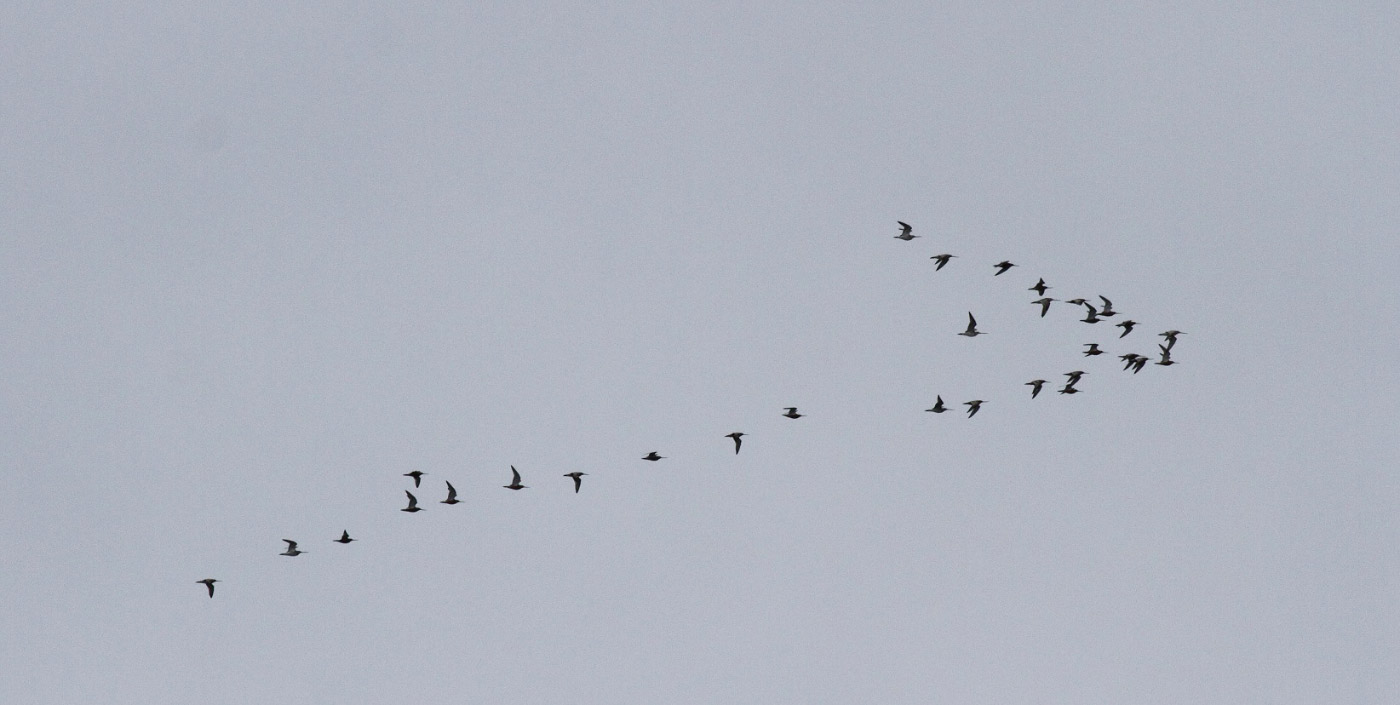
Murky conditions in late April and early May, especially when combined with a north-easterly airflow, can produce large overland movements of Bar-tailed Godwit, which may be seen just about anywhere. These passed over a Surrey reservoir on 29 April 2018 (Dave Harris).
And remember – you can encounter anything, anywhere at this time of year. Even the smallest ponds may attract Tringa species such as Green or Wood Sandpipers, while seasonal floods can produce a wide range of taxa, even if for a brief period of time. Flyovers are always a possibility, especially in the first and final few hours of daylight. Noc-migging is a great way to record waders on your local patch, too, as most favour migrating in the hours of darkness and will routinely call as they do so.
The following account charts a chronological journey through a typical spring, looking at a range of species that inland patchwatchers might hope or even expect to see, and when. Of course, this is not an exact science – birding never is – and acts more of a rough guide to when particular species tend to peak and thus be most likely to put in an appearance at your local spot.
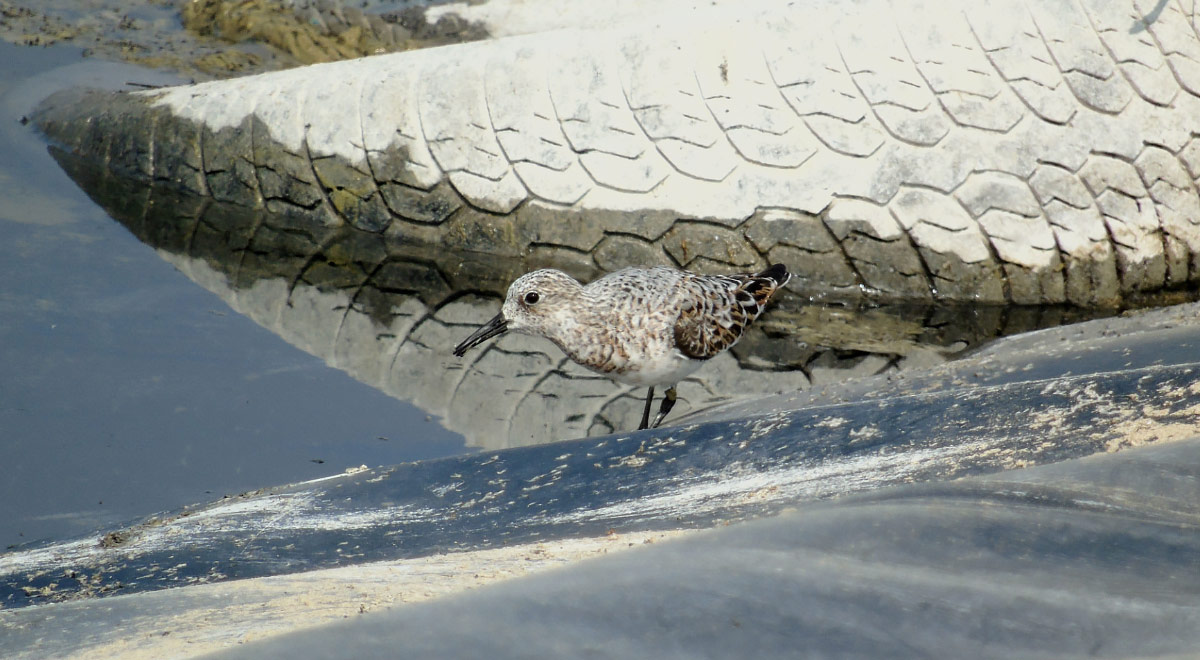
Any inland patch can have its day. Even a small rubber-lined farm reservoir has the potential to produce surprises, like this Sanderling probing among the floating tyres in land-locked Surrey on 7 May 2016 (Ed Stubbs).
Early promise
The first migrant passerines usually appear on British shores in early March, but waders tend to start moving some weeks before this. Indeed, one of the first signs of spring for inland birders is the reappearance of Eurasian Oystercatchers on breeding territories – some will arrive back in the opening days of February.
Ringed Plovers follow not long after this, the first usually appearing in the second half of February or at the beginning of March, and both species can often be found at working quarries long before the first Sand Martin arrives.
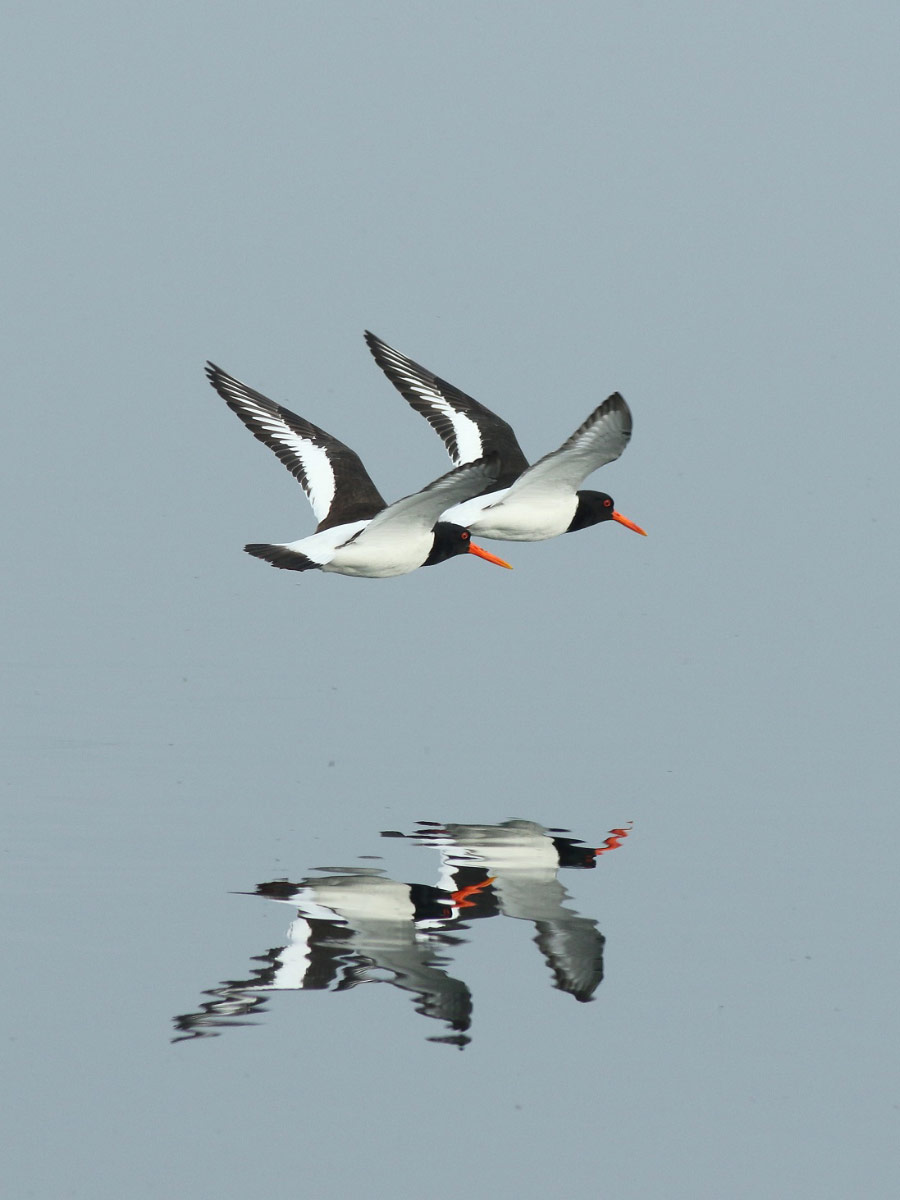
The noisy return of Eurasian Oystercatchers to inland breeding grounds kicks off a protracted spring of wader passage (Dave Harris).
This sets the trend for the spring, with locally breeding species appearing first, followed by those heading on their way to temperate marshes across Europe. Taiga species come next, with the High Arctic tundra-breeding Calidrids tending to be the last to pass through during May (and even early June).
Typical March migrants include the familiar Common Redshank, a species which both breeds and winters widely across Britain. It may be encountered in any month, but March and April are peak for birds on the move – it is this time that just about any patch might pick one up, especially if a waterbody is available.
In a similar vein is Eurasian Curlew. Few sounds are more recognisable than its melodic, haunting whistle, and indeed it is by call that you usually pick up on approaching curlew. Repeated utterances make them easy to track before they eventually come in to view. It is also a species often heard in the dead of night. Early March onwards will produce, although almost all will have passed by the time April is out – unless they breed locally.
A charismatic summer migrant, the first Little Ringed Plovers will also begin to appear from mid-March, with southern England particularly likely to score first. These harbingers are usually quiet and unassuming migrants, often lingering a day only. But, later in the month, the species' frenetic and noisy display flights will become ever-more apparent over suitable breeding habitat, particularly working sand and gravel pits, but also waste ground and even farmland.
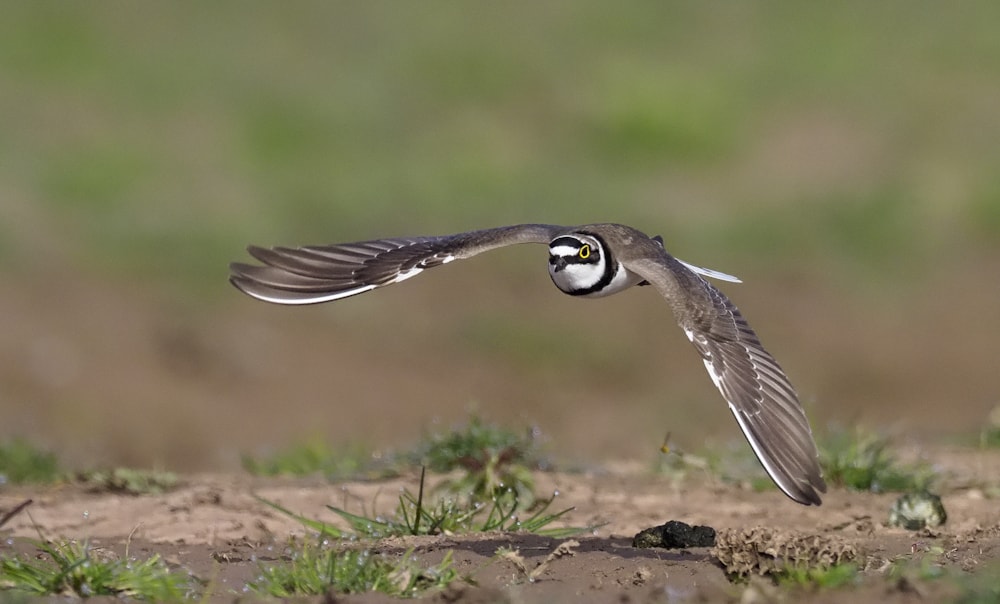
Little Ringed Plovers start to arrive back in Britain in mid-March (Mike Lane).
As its breeding population expands, Avocet is becoming an ever-more dependable species for inland patchers. It now breeds at many recently created wetlands across the British interior, and migrants will also appear in March, with a peak during the second half of the month and the first two weeks of April. However, roving singles or pairs, searching for suitable places to breed, can drop in at any point in the spring – but will often only linger a day, before moving on again.
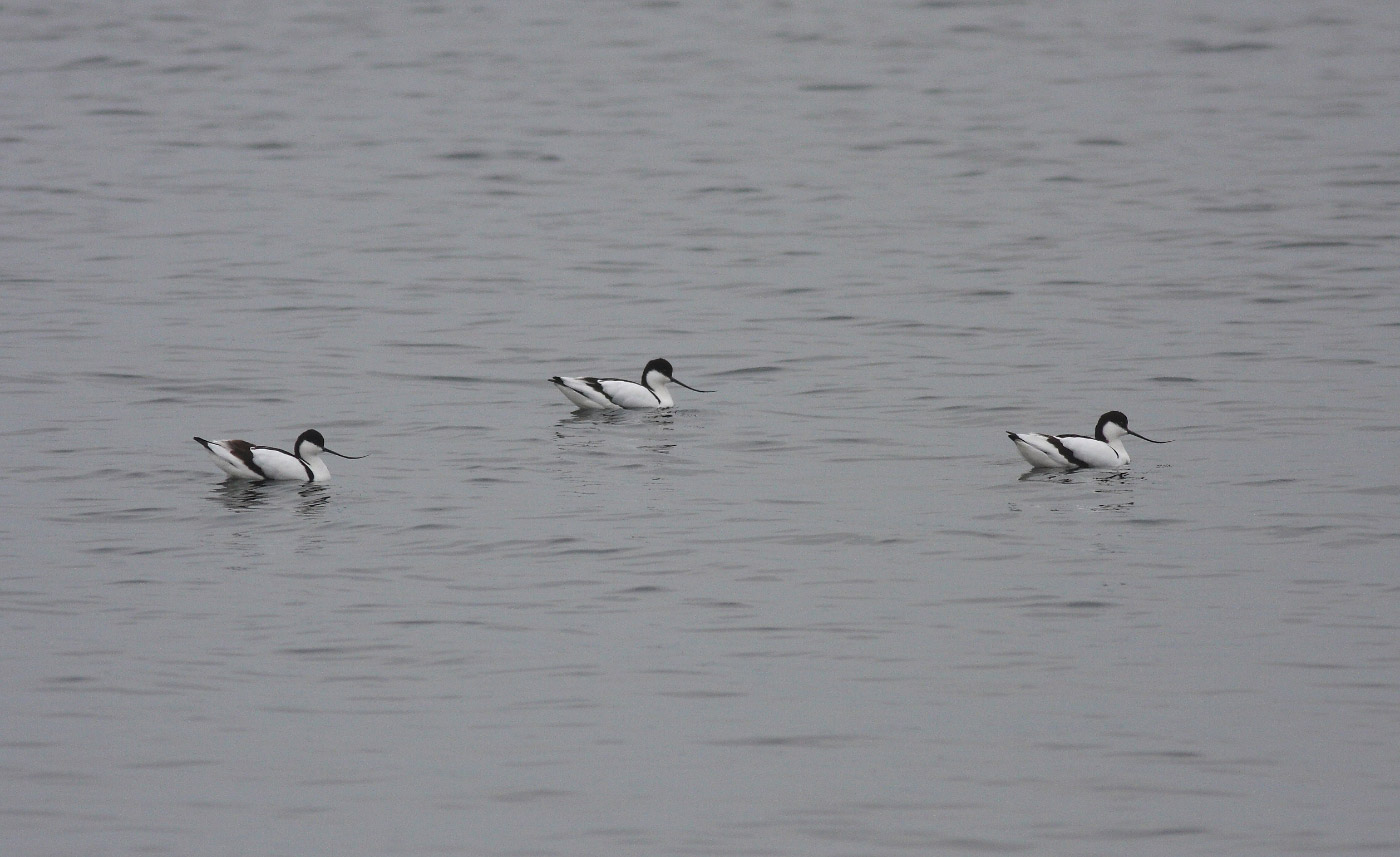
Avocet is a classic inland migrant in the second half of March. And your patch doesn't need to have extensive muddy margins, either – they'll happily rest on water, like these at Queen Elizabeth II Resevoir, Surrey, on 28 March 2014 (Dave Harris).
Famous for being the earliest-returning wader in 'autumn' (often as early as the second week of June), it's no great surprise that Green Sandpiper is also one of the first to move north. Passage gets going in the second half of March and can last until late April – although it's always a fairly inconspicuous phenomenon, with numbers never high.
April arrives
As March turns to April, the scope of potential species widens. Early movers include Icelandic Black-tailed Godwits, although passage for this species is protracted and they can pass through well into May. They're a sociable species and will more often be in sizeable flocks, rather than solitary.
A classic April wader that seems to be suffering a largely overlooked yet worrying decline is Spotted Redshank, with the middle and end of the month being prime time. By this point most will be in their smoky breeding regalia. It's a species that can occur anywhere, from the concrete banks of a reservoir to flooded fields and marshes, and tends to be vocal when present – listen out for their nervous yet excitable chew-it, which is often uttered in conjunction with overdramatic head-bobbing when on the deck.
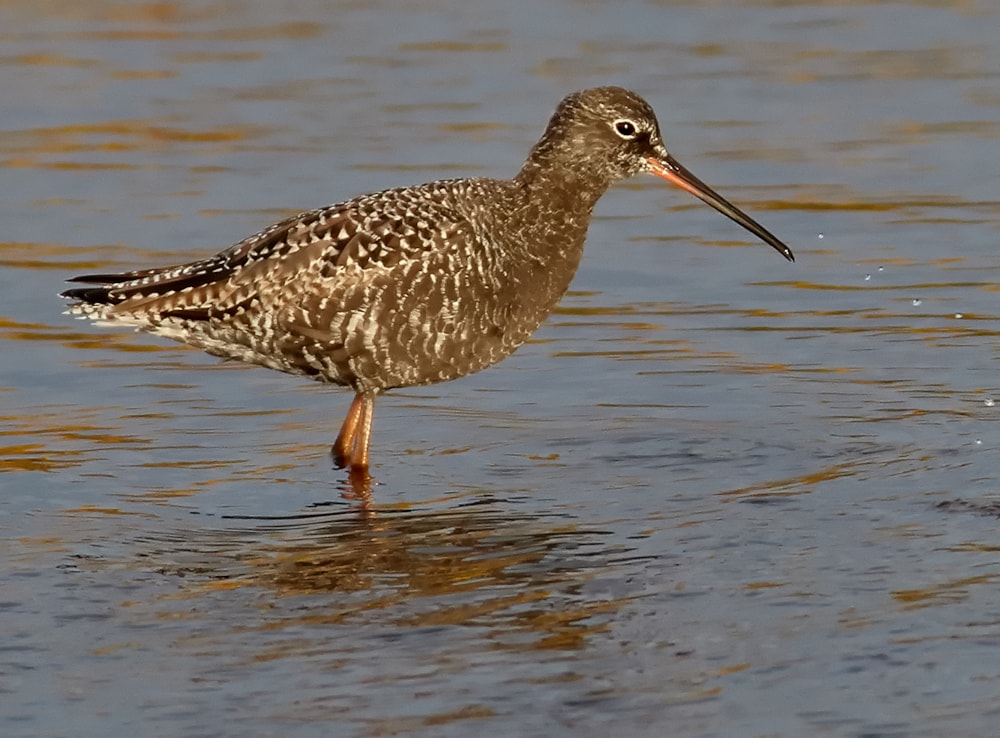
Spring-plumaged Spotted Redshank ranks among the finest of waders. The pale fringing to the underpart feathering wears off as the summer progresses, leading to the altogether 'blacker' post-breeding birds we see arriving back in June and early July (Simon Johnson).
Whimbrel passage also starts to hot up from mid-month. As with curlew, this species is vocal and more often heard before it is seen, so being familiar with the call pays dividends. However, they will often migrate at low altitude and are easy to pick up by sight – plus they will sometimes migrate in sizeable groups, making for a real treat for any inland birder. Greenshank, too, is another vocal species that will begin to appear in mid-April and continue well into May, with its conspicuous nature making it a realistic target both as a flyover or at a wetland site.
As the month progresses, the familiar Common Sandpiper will start to appear in greater numbers. This is the go-to wader for most inland patchers, being seen just about anywhere with water – stinking puddles and small streams can temporarily attract this charming species, which will often announce itself with its distinctive three-note call before it comes into view, fluttering on curiously stiff wings.
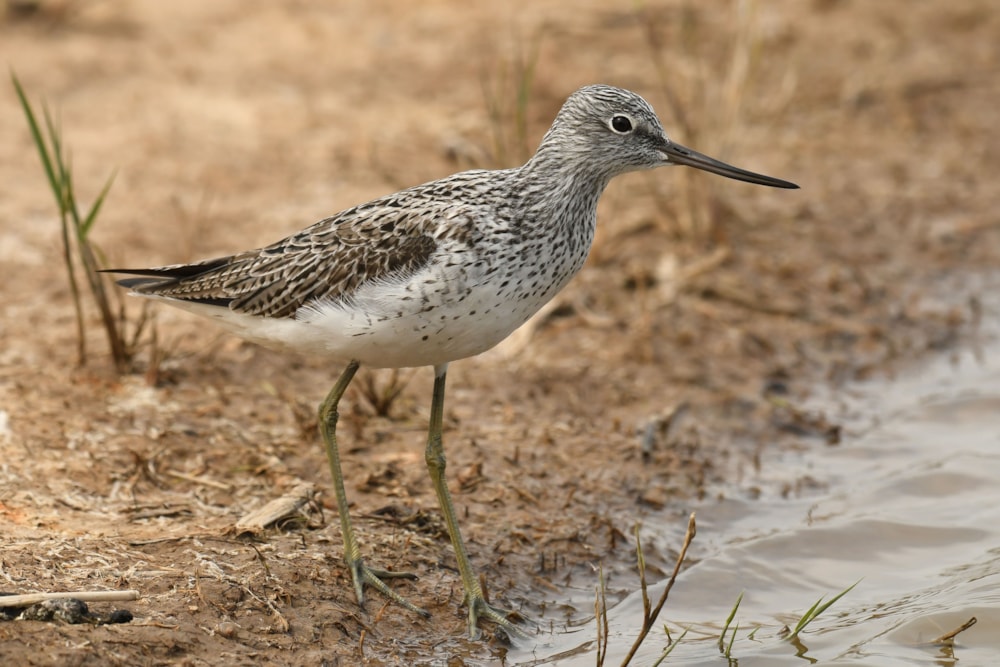
Streaked chic: Greenshank is one of the commoner migrant waders seen inland in spring (Nick Appleton).
May Day heights
While March and the first half of April can produce decent waders, there's no doubt that it's the final week of April and the first half of May that offer the inland patcher the best chances for both volume and variety. And, if conditions are right, the early May bank holiday weekend will often produce memorable shorebird migration.
One species that epitomises this period, perhaps more than any other, is Bar-tailed Godwit. The intensity of overland movements varies year on year, but if the stars align then this is a species that can be picked up just about anywhere – and sometimes in large flocks. They are often visible throughout the day, and will stop off in a variety of habitats – reservoirs, gravel pits or other wetlands are optimal, but they have been known to pitch down in fields or meadows, at least for a brief time, especially if the weather forces them to do so. It's a realistic prospect for anyone inland between 20 April and 10 May, with the biggest movements tending to take place around the turn of the month.
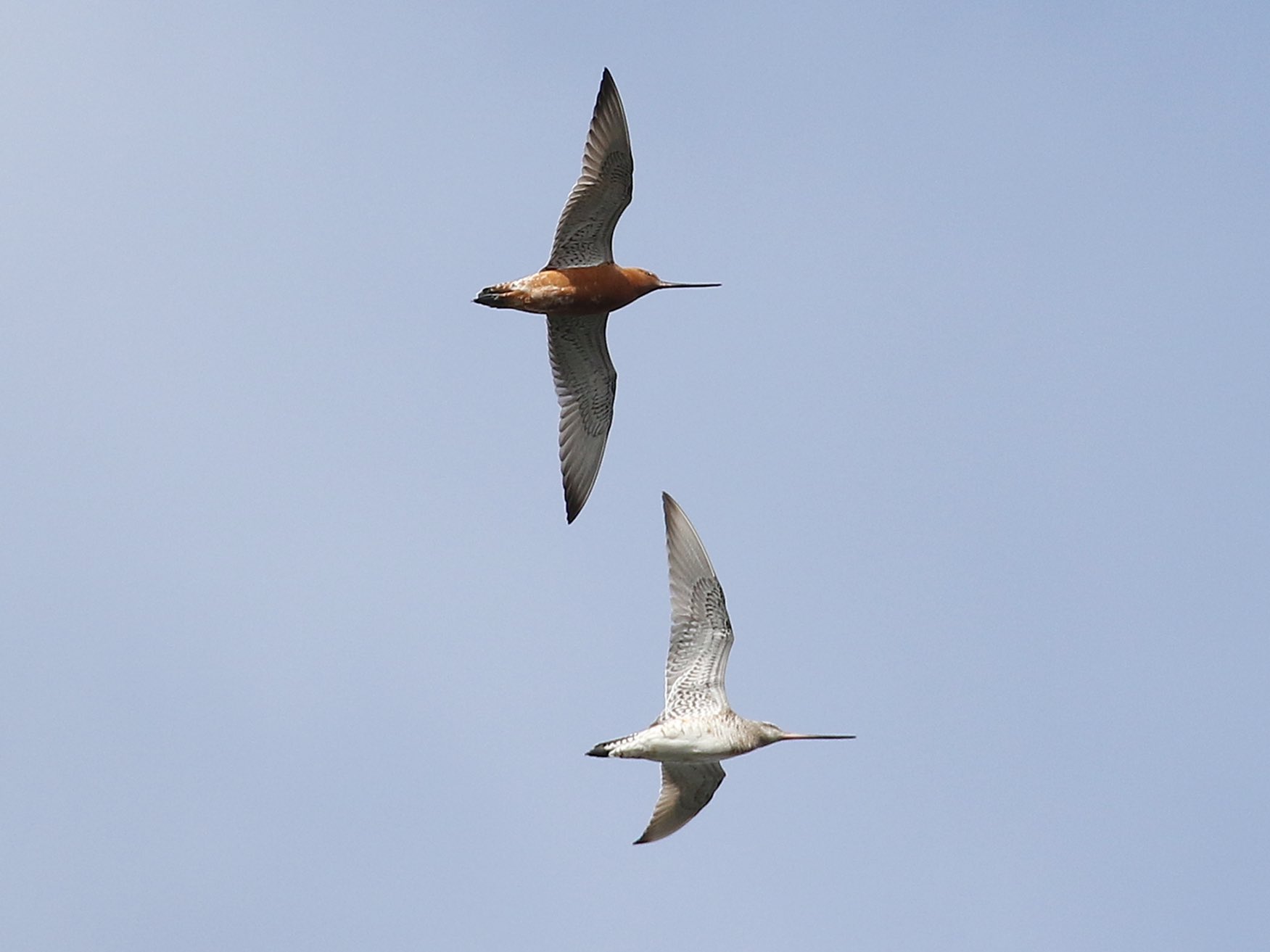
Bar-tailed Godwits are strong fliers, and are often seen passing overhead without stopping. This image nicely demonstrates the plumage variation seen in spring, with the brick-red male (top) and the larger, greyish female also differing noticeably in structure, too (Jamie Partridge).
Often seen migrating alongside Barwits is another inland patcher's favourite – Grey Plover. Generally not as numerous as the former, this is another species which comes into its own in the peak weeks of spring. Gone is the uniform leaden-grey bird of the winter months, and replacing it is a spectacular bird of spangled silver, white and black. It is, without doubt, one of the classiest looking of the spring waders – and is scarce enough to be a prize for anyone.
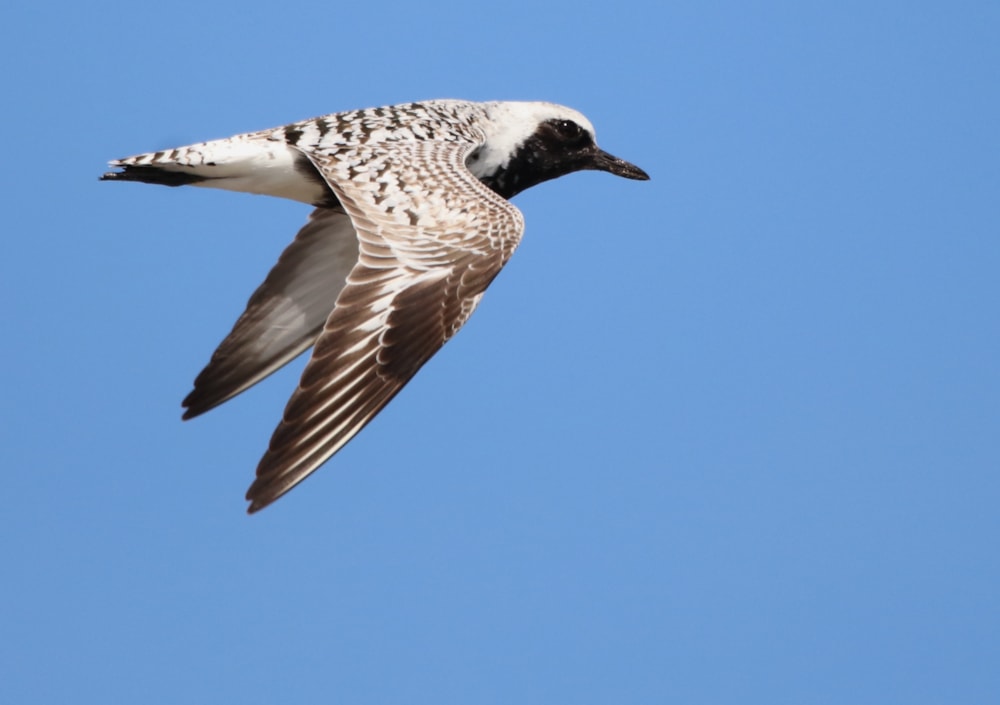
Is there a better-looking species than Grey Plover in spring? (Tate Lloyd).
Wood Sandpiper will also start to appear from around 20 April, particularly on the back of an easterly airflow, which will divert birds heading for Scandinavian breeding grounds a little further west than usual. Warm weather and thunderstorms in May can be a particularly conducive to arrivals, although they generally tend to be a bit more east-coast biased in spring. This is one of the more vocal species, often heard before being seen – listen for its slightly hysterical-sounding flight call, rather as if it is uncontrollably laughing at something.
This is also a great time for Dunlin, with numbers peaking from the end of April and throughout May. Along with Common Sandpiper, this tends to be the other default small shorebird inland at this time, sometimes occurring in quite large flocks, but nonetheless is always a treat when seen in its gold, white and black breeding dress. Indeed, it is also a valuable carrier species, with even small groups sometimes transporting scarcer Calidrids among them at this time of year. Every Dunlin flock deserves scrutiny inland!
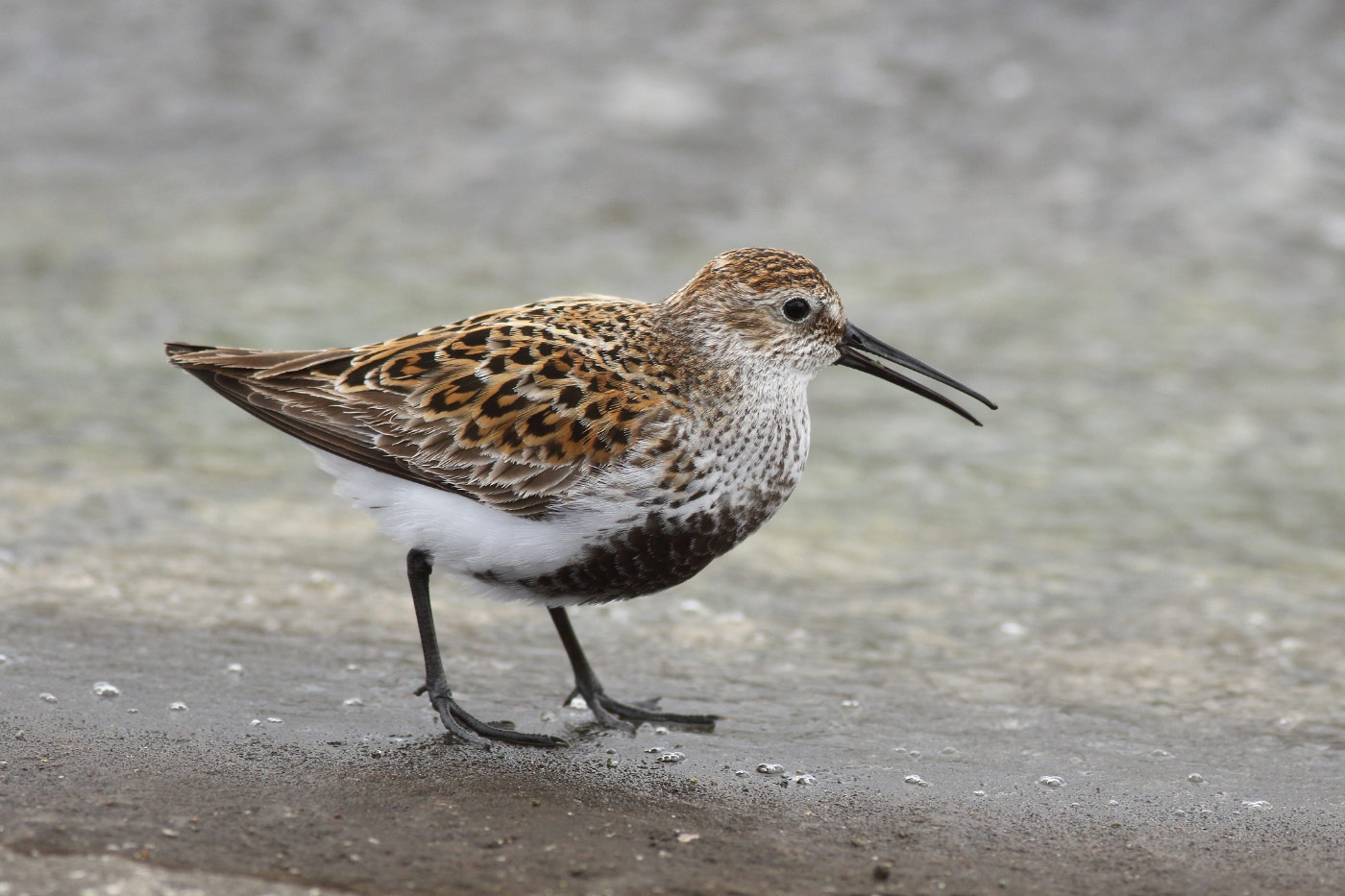
Dunlin is the default small wader inland in spring and will sometimes occur in large flocks. It's a beautiful bird in its own right, but check any gatherings for scarcer treats hidden within (Dave Harris).
Mixing it up with the Dunlin is the spring's later push of Ringed Plovers – but these are not local breeders, rather smaller and darker birds of the Tundra-breeding subspecies, tundrae. These will pass over the same timeframe as other species bound for the Arctic, sometimes into early June.
Ruddy Turnstone and Sanderling, two familiar denizens of our coasts, are classic May prizes for the inland patcher. Both are perennially scarce inland, and this month is the best in the calendar year to find them at your local site. Never numerous and generally unpredictable, albeit regular enough to be a realistic annual target for those watching, they are frequently found lurking among groups of Dunlin – although will often form single-species flocks of their own kin.
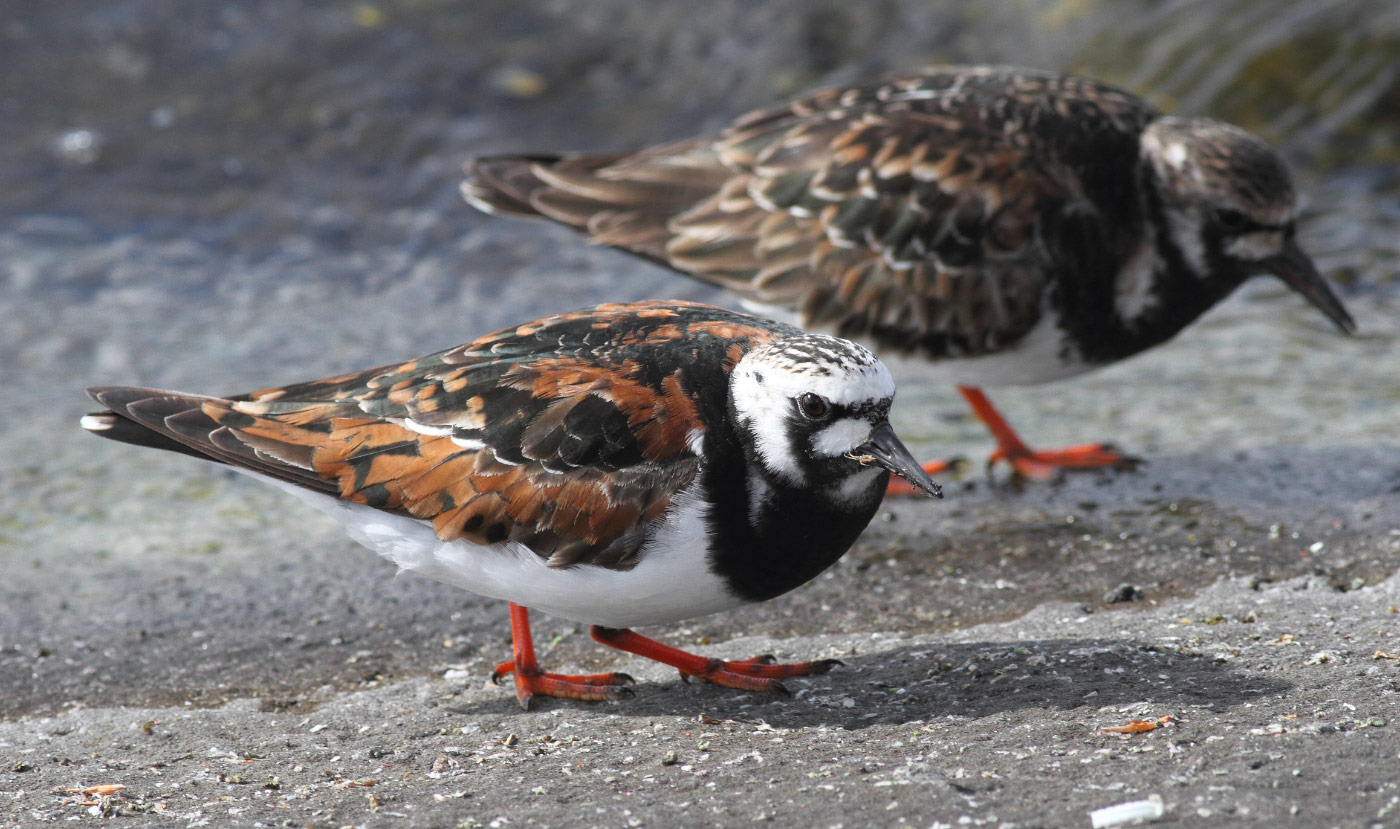
Their penchant for rocky shores is undeniable, and inland Ruddy Turnstones will often gravitate to the closest possible alternative – reservoir dams (Dave Harris).
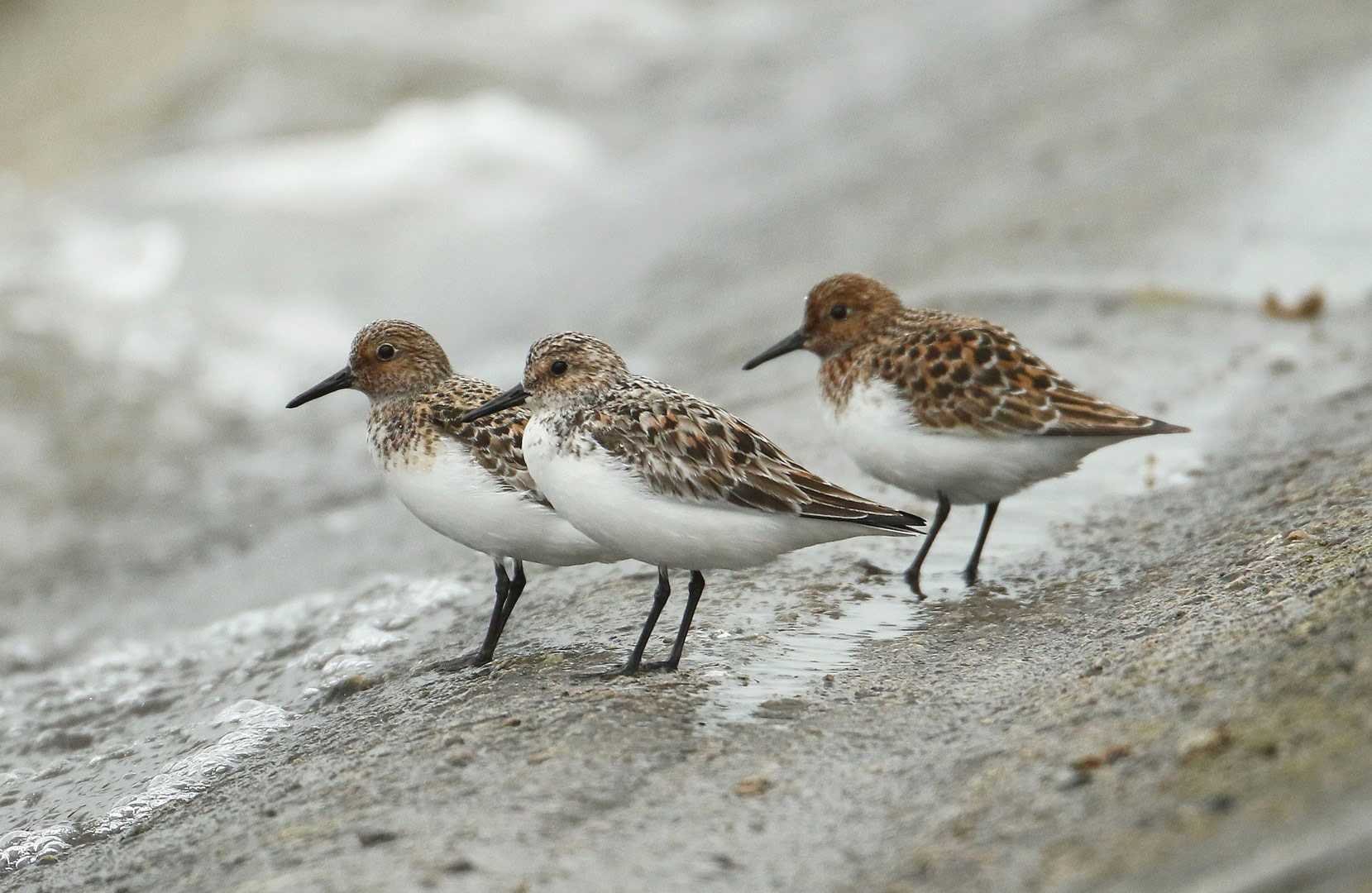
Sanderling also love a dam on passage, but may also touch down at gravel pits, in wet fields or even on man-made structures, such as floating solar panels (Jon Mercer).
Despite hundreds of thousands wintering around our coasts, Red Knot is one of the scarcest of the 'regular' waders to be encountered inland – a level up from the preceding two species in terms of relative rarity. The second half of April and May is undoubtedly the best period in which to find one. They tend to be both elusive and fleeting, too, often only pitching down at wetlands if they absolutely need to. Connecting with this species inland is therefore a real treat – and not least because it is a month when the species will be very much living up to its 'Red' title.
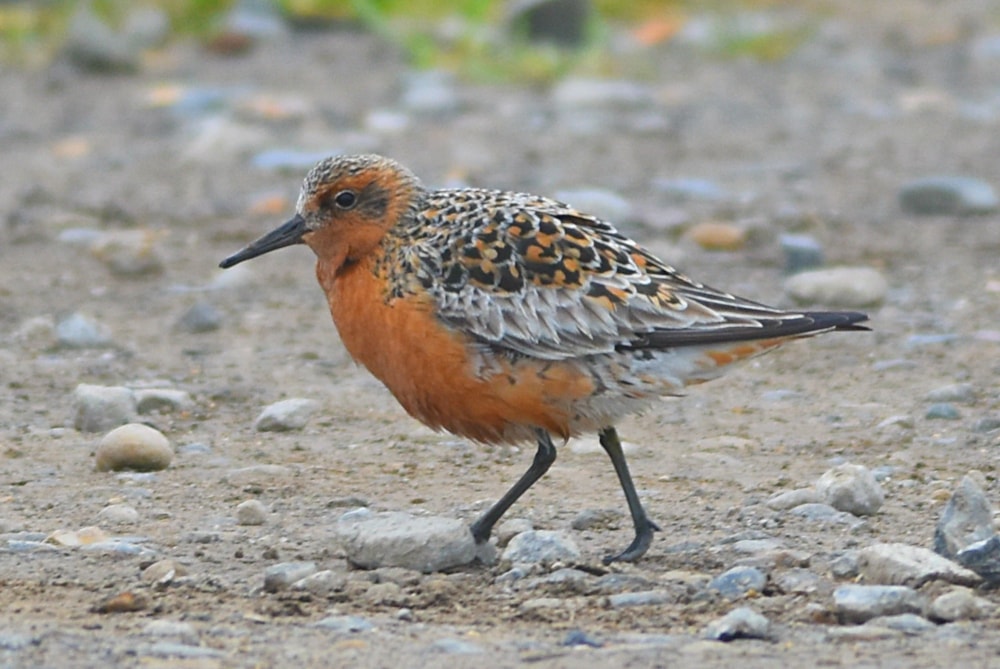
A spring-plumaged Red Knot, with its combination of brick-red, gold and black, is a real sight to behold (Andy Hood).
Ramping up the scarcity even further, the end of April – but predominately May – is the absolute peak for a patch Temminck's Stint. These tiny, unassuming waders aren't the most spectacular, but possess a subtle beauty and distinctive charisma as they inadvertently creep around – and are rare enough to make for a pulsating discovery when come across. They're also a realistic target for any inland birder with water on their patch – flooded fields and even small stagnant pools have attracted the species in the past, along with the more typical gravel workings and reservoirs. They tend to be solitary, or in groups of up to a handful – and usually keep themselves to themselves, rather than associating with other species. Numbers vary year on year, but a good spring total may run into the hundreds, many of which occur inland.
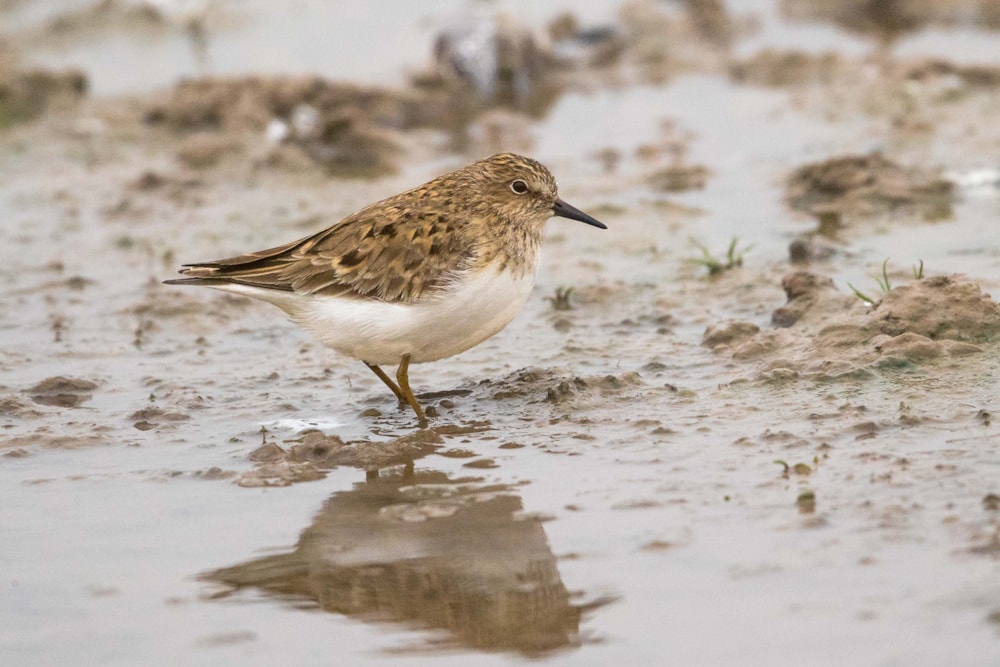
Dainty and diminutive, Temminck's Stint is an unassuming yet highly prized Calidrid (Ian Bollen).
The wonderful thing about rare shorebirds is that they are entirely unpredictable in where they might turn up. At this time of year, inland sites seem to have just as much chance of picking up many rare and scarce waders as their coastal counterparts. In some springs, Pectoral Sandpiper – a species well known for turning up just about anywhere – can be quite numerous. As long as there's water, there's a chance of a Red-necked Phalarope in May – while the much rarer Wilson's Phalarope has also turned up in this month on several occasions.
In line with migrating Greenshanks and Spotted Redshanks, mid-April onwards has the outside chance of producing a Marsh Sandpiper. Later in the season, when Calidrid passage gets underway, Broad-billed Sandpiper becomes the staple of inland patchers' dreams – there's usually an inland record every two or three years, often towards the end of May or even in early June. In most springs there are usually spontaneous records of Nearctic species, such as Semipalmated, Buff-breasted or White-rumped Sandpipers, to keep the inspiration flowing.
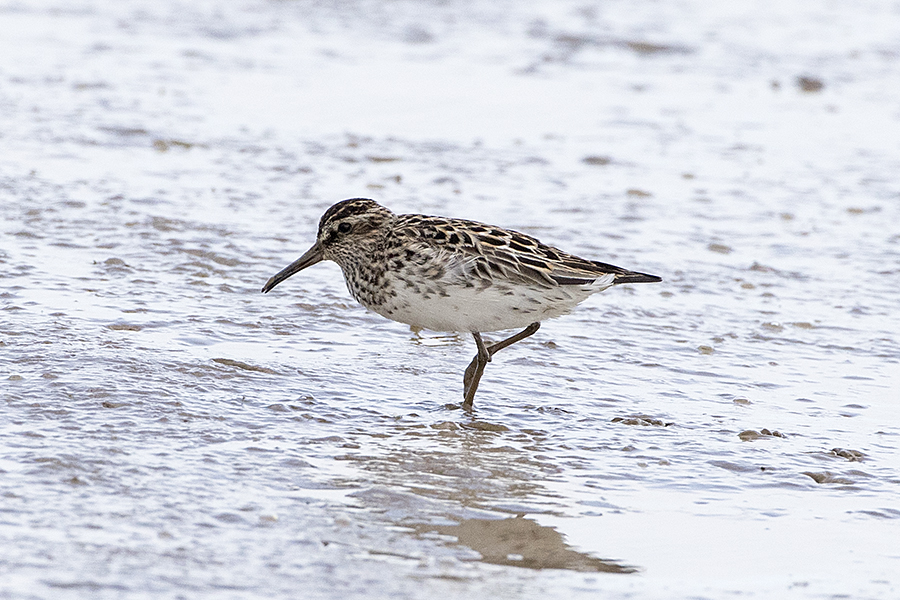
Any inland patcher's dream find: a breeding-plumaged Broad-billed Sandpiper (Andrew Moon).
But it's just as much an appreciation of the wonder of migration as it is about rarities. This family of birds is the ultimate embodiment of migration – moving thousands of kilometres each year between destinations as varied as the tropics and High Arctic, there is something poignant and humbling about encountering these great travellers at your local patch. For the inland birder, there are few more exciting moments in the birding year than a chance encounter with a pristinely plumaged migrant wader, fleetingly pausing – or, as is often the case, passing by overhead – while on patch. Make the most of any find, for waders are often gone again in a flash. Until the next spring, when the fun starts over again …


